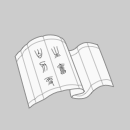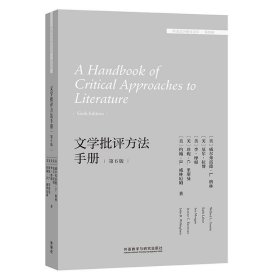
文学批评方法手册(第6版)(外国文学研究文库·第四辑)
全新正版 极速发货
¥ 50.55 6.9折 ¥ 73 全新
库存3件
广东广州
认证卖家担保交易快速发货售后保障
作者[美]威尔弗雷德·L. 格林(WILFRED L. GUERIN)等
出版社外语教研
ISBN9787521345353
出版时间2023-09
装帧其他
开本其他
定价73元
货号31838464
上书时间2024-05-30
- 最新上架
商品详情
- 品相描述:全新
- 商品描述
-
目录
PREFACE
1.Getting Started: The Precritical Response
Ⅰ.Setting
Ⅱ.Plot
Ⅲ.Character
Ⅳ.Structure
Ⅴ.Style
Ⅵ.Atmosphere
Ⅶ.Theme
2.Traditional Approaches
Ⅰ.A Note on Traditional Approaches
Ⅱ.Textual Scholarship, Genres, and Source Study
A.Textual Scholarship: Do We Have an Accurate Version of What We Are Studying
1.General Observations
2.Text Study in Practice
B.Matters of Genre: What Are We Dealing With
1.An Overview of Genre
2.Genre Characteristics in Practice
C.Source Study: Did Earlier Writings Help This Work Come into Being
Ⅲ.Historical and Biographical Approaches
A.General Observations
B.Historical and Biographical Approaches in Practice
1."To His Coy Mistress
2.Hamlet
3.Huckleberry Finn
4."Young Goodman Brown
5."Everyday Use
6.Frankenstein
Ⅳ.Moral and Philosophical Approaches
A.General Observations
B.Moral and Philosophical Approaches in Practice
1."To His Coy Mistress"
2.Hamlet
3.Huckleberry Finn
4."Young Goodman Brown"
5."Everyday Use"
6.Frankenstein
Ⅴ.Summary of Key Points
Ⅵ.Limitations of Traditional Approaches
3.Formalist Approaches
Ⅰ.The Process of Formalist Analysis: Making the Close Reader
Ⅱ.A Brief History of Formalist Criticism
A.The Course of Half a Century
B.Backgrounds of Formalist Theory
C.The New Criticism
D.Reader-Response Criticism: A Reaction
Ⅲ.Constants of the Formalist Approach: Some Key Concepts, Terms, and Devices
A.Form and Organic Form
B.Texture, Image, Symbol
C.Fallacies
内容摘要
本书由五位美国大学知名的教育家及英美文学专家所著,是一部通俗易懂的作品,不仅有批评方法的阐述,而且有实践应用的例证;每一章都始于对特定方法的介绍和界定,然后把该种方法运用于六本相同的作品,分别代表诗歌、戏剧、长篇小说和短篇小说等不同文类。第6版更在保留原来特点的基础上,增添了新的内容,提供了新的解读,是我国相关专业大学本科生甚至硕士研究生的理想学习用书。
相关推荐
— 没有更多了 —
















以下为对购买帮助不大的评价